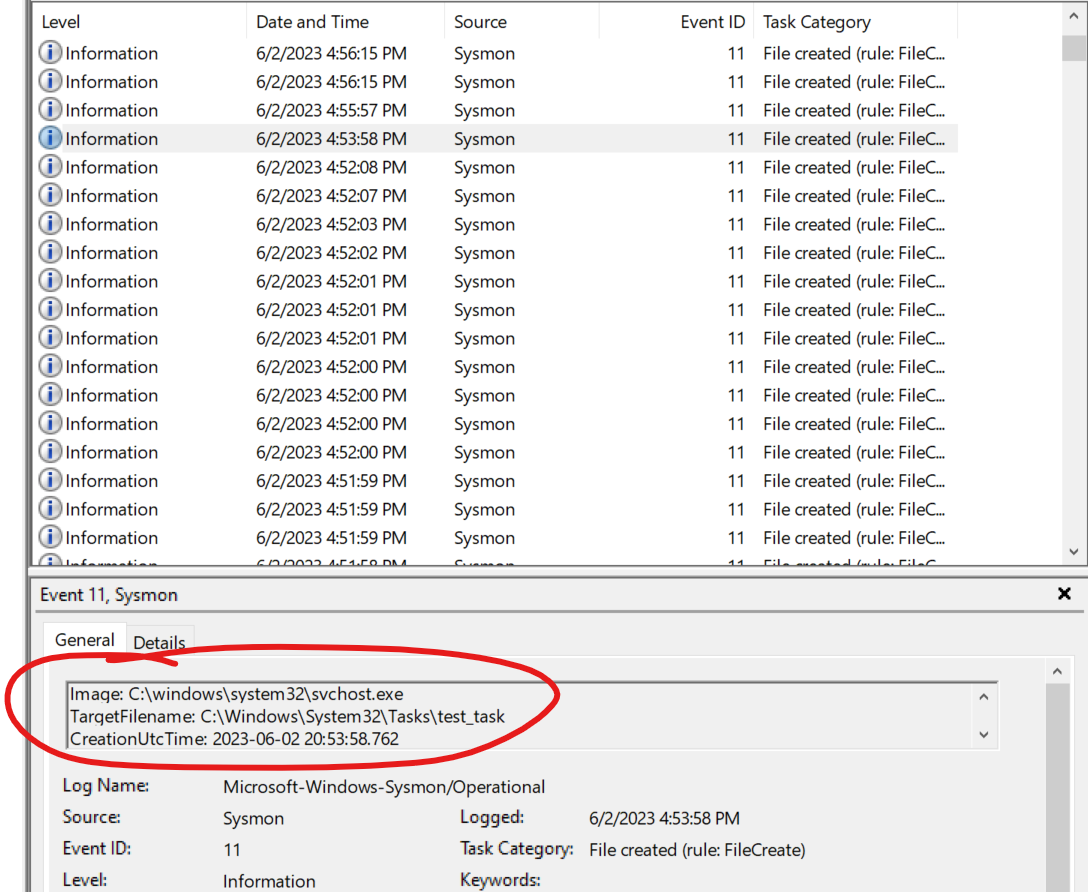Scheduled Task/Job¶
Original Analytic¶
title: Scheduled Task Creation
id: 92626ddd-662c-49e3-ac59-f6535f12d189
status: test
description: Detects the creation of scheduled tasks in user session
author: Florian Roth (Nextron Systems)
date: 2019/01/16
modified: 2022/10/09
tags:
- attack.execution
- attack.persistence
- attack.privilege_escalation
- attack.t1053.005
- attack.s0111
- car.2013-08-001
logsource:
category: process_creation
product: windows
detection:
selection:
Image|endswith: '\schtasks.exe'
CommandLine|contains: ' /create '
filter:
User|contains: # covers many language settings
- 'AUTHORI'
- 'AUTORI'
condition: selection and not filter
fields:
- CommandLine
- ParentCommandLine
falsepositives:
- Administrative activity
- Software installation
level: low
Analytic Source: SigmaHQ
Original Analytic Scoring¶
Application (A) |
User-Mode (U) |
Kernel-Mode (K) |
|
|---|---|---|---|
Core to (Sub-) Technique (5) |
|||
Core to Part of (Sub-) Technique (4) |
|||
Core to Pre-Existing Tool or Inside Boundary (3) |
EventID: 1
CommandLine|contains: ‘/create’
|
||
Core to Adversary-Brought Tool or Outside Boundary (2) |
|||
Ephemeral (1) |
Image|endswith: ‘\schtasks.exe’ |
The original analytic detects on the name of a newly-created process in combination with
the commandline argument /create. The fields references in this analytic exist in
Sysmon EventID 1 and not Windows Event ID 4688 for process creation, therefore we know
the intent was to use Sysmon data. We have previously scored Sysmon Event ID 1 as
operating in kernel-mode.
The schtasks executable can be easily copied and renamed by an adversary,
Image|endswith: '\\schtasks.exe' therefore it is placed at the Ephemeral level. The
commandline argument is more challenging for an adversary to evade, since they would
likely need the source code to change these arguments. However, since schtasks exists in
the OS prior to system compromise and no source code is available, the commandline
argument observable is placed at Core to Pre-existing Tool. Factoring in StP boolean
logic, this analytic ultimately scores at a 1K because an adversary can simply change
the Image name and avoid detection.
Note
The filter in an analytic does not affect the overall robustness score since its purpose is to remove false positives. Studying how filters affect scoring is slated for future research.
We can use existing open source research from SpecterOps to make this analytic more robust. The following capability abstraction highlights several different ways adversaries could schedule a task on a system without firing the original analytic, and our original analytic would only detect the circled implementation.

Scheduled Task Capability Abstraction - Created by SpecterOps [1] (Click to enlarge)¶
Conversely, defenders can use the capability abstraction to create several different analytics, the most robust of which might detect on the invariant registry or file creation activity. As a first attempt at a more robust analytic, we can start with the file creation activity. If we create a scheduled task via the Task Scheduler GUI in a test environment with Sysmon installed, we might expect to generate an Event ID 11: FileCreate.

Sysmon Event ID 11: FileCreate (Click to enlarge)¶
Looks like the hypothesis was correct! An Event ID 11 was generated under the expected C:\Windows\System32\Tasks
directory.
Note
It is important to note all the false positives. Unfortunately this more robust analytic generates a large amount of false positives and should be combined with other observables or fields to provide context, filter out false positives, and ensure the analytic is not completely ignored by an analyst.
Let’s score this new analytic and see if it is more robust than the original. It’s tough to tell right now where to place Event ID 11, but fortunately open-source references exist that enumerate Windows APIs and the respective Event IDs that are generated:
Roberto Rodriguez’s API - To - Event
Jonny Johnson’s TelemetrySource
These two spreadsheets indicate which Event IDs are generated by user-mode or kernel-mode APIs. An excerpt of Roberto’s spreadsheet is below, showing the different APIs that generate a Sysmon Event ID 11: FileCreate.
API Call |
EventID |
Event Name |
Log Provider |
|---|---|---|---|
CopyFile |
11 |
FileCreate |
Microsoft-Windows-Sysmon |
CopyFile2 |
11 |
FileCreate |
Microsoft-Windows-Sysmon |
CopyFileEx |
11 |
FileCreate |
Microsoft-Windows-Sysmon |
CreateFile2 |
11 |
FileCreate |
Microsoft-Windows-Sysmon |
CreateFileA |
11 |
FileCreate |
Microsoft-Windows-Sysmon |
CreateFileW |
11 |
FileCreate |
Microsoft-Windows-Sysmon |
MoveFile |
11 |
FileCreate |
Microsoft-Windows-Sysmon |
NtCreateFile |
11 |
FileCreate |
Microsoft-Windows-Sysmon |
NtWriteFile |
11 |
FileCreate |
Microsoft-Windows-Sysmon |
All the relevant APIs are in user-mode, and since the file activity is invariant behavior across all implementations of task scheduling we can score this analytic at 5U.
Improved Analytic Scoring #1¶
Application (A) |
User-Mode (U) |
Kernel-Mode (K) |
|
|---|---|---|---|
Core to (Sub-) Technique (5) |
EventID: 11
TargetFileName|contains:
- “C:\Windows\System32\Tasks”
- “C:\Windows\SYSWOW64\Tasks”
|
||
Core to Part of (Sub-) Technique (4) |
|||
Core to Pre-Existing Tool or Inside Boundary (3) |
|||
Core to Adversary-Brought Tool or Outside Boundary (2) |
|||
Ephemeral |
So far we have created an analytic using the FileCreate invariant behavior. What if we pivot and use the registry key? Might the registry key approach score at a higher level? Sysmon EventID 12: RegistryEvent (Object create and delete) should be generated when a registry key is created. Roberto’s Event ID to Windows API mapping shows us that Event ID 12 can be generated from kernel-mode APIs, so we can score this analytic as operating in kernel-mode.
API Call |
EventID |
Event Name |
Log Provider |
|---|---|---|---|
RegCreateKeyA |
12 |
RegistryEvent (Object create and delete) |
Microsoft-Windows-Sysmon |
RegCreateKeyExA |
12 |
RegistryEvent (Object create and delete) |
Microsoft-Windows-Sysmon |
RegCreateKeyExW |
12 |
RegistryEvent (Object create and delete) |
Microsoft-Windows-Sysmon |
RegCreateKeyW |
12 |
RegistryEvent (Object create and delete) |
Microsoft-Windows-Sysmon |
ZwCreateKey |
12 |
RegistryEvent (Object create and delete) |
Microsoft-Windows-Sysmon |
Since the registry key is invariant behavior, the analytic is placed at the Core to Subtechnique level and we can ultimately score it at 5K. It is important to ensure an adversary can’t evade our analytic by editing an existing registry key value or an renaming an entire registry key/value pair, so we should also integrate Event IDs 13: (Value Set) and 14: (Key and Value Rename) into our analytic logic.

Improved Analytic Scoring #2¶
Application (A) |
User-Mode (U) |
Kernel-Mode (K) |
|
|---|---|---|---|
Core to (Sub-) Technique (5) |
EventID:
- 12
- 13
- 14
TargetObject|contains:
- “HKLM\SOFTWARE\Microsoft\Windows NT\CurrentVersion\Schedule\TaskCache\Tree\”
- “HKLM\SOFTWARE\Microsoft\Windows NT\CurrentVersion\Schedule\TaskCache\Tasks\”
|
||
Core to Part of (Sub-) Technique (4) |
|||
Core to Pre-Existing Tool or Inside Boundary (3) |
|||
Core to Adversary-Brought Tool or Outside Boundary (2) |
|||
Ephemeral (1) |
Note
It is also possible to implement a similar analytic by placing a SACL on the invariant registry keys and searching for Event IDs 4657 or 4663.
References
